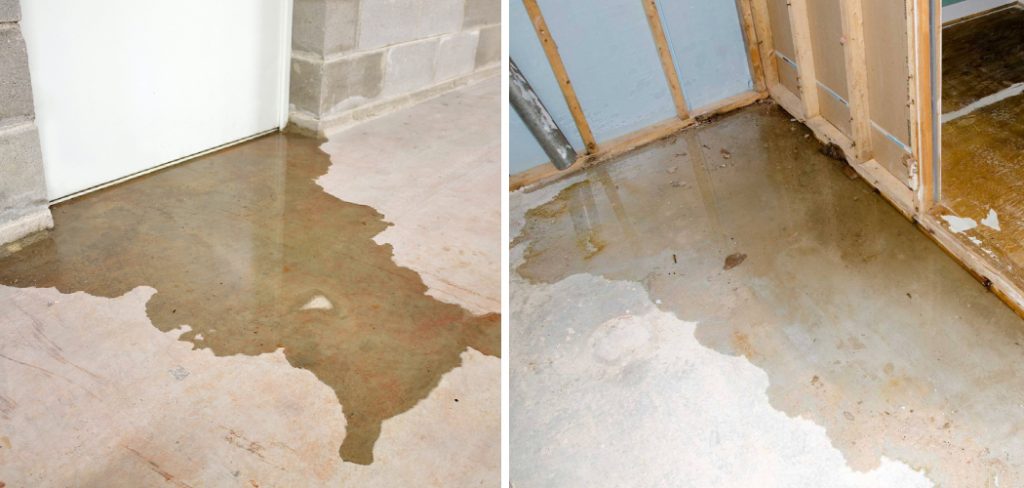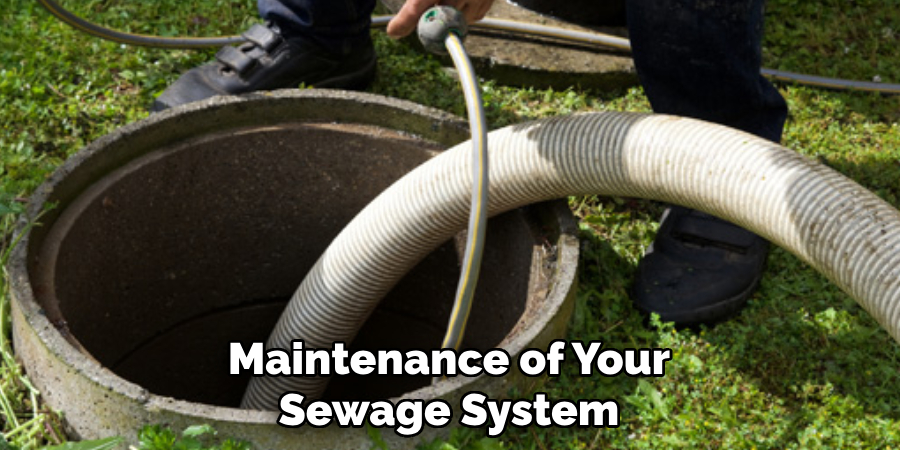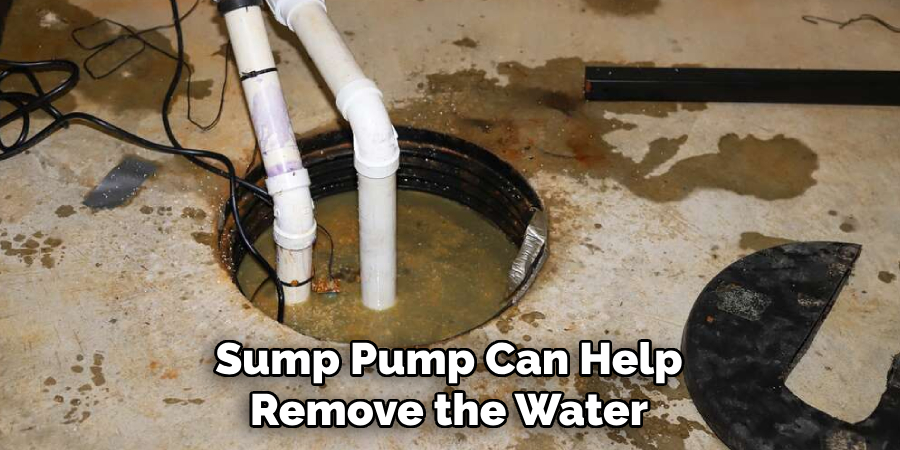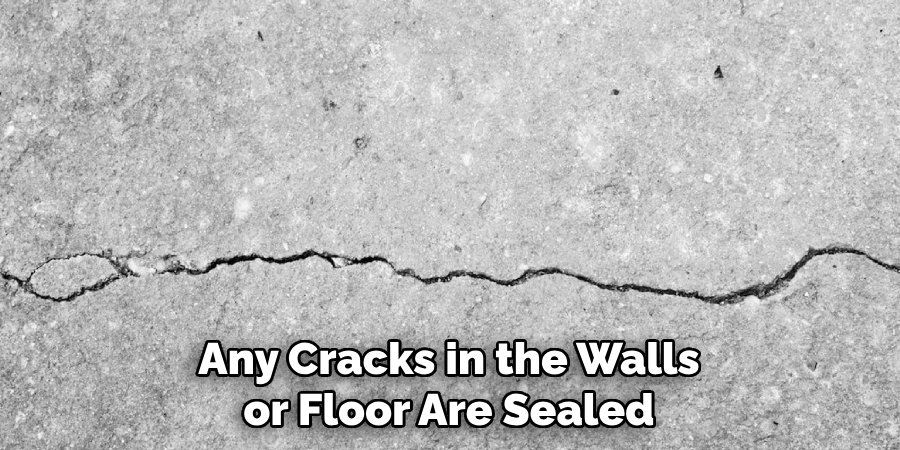Are you tired of dealing with the frustration and mess of sewage backup in your basement? Maybe you’ve been living with it for months or longer and don’t know how to get rid of it. If so, then this post is perfect for you!

Whether you’re a homeowner or renter, we’ll explain what you need to know about sewage backup in basements and how to stop it.
Here, we will discuss various methods to help prevent sewer backups and keep your home dry. Thanks to these tips and tricks, no one has to suffer any longer from the hassle of a backed-up drainage system ever again! Read on for more information on how to stop sewage backup in basement into your home.
What Will You Need?
Before you can start working on the problem, having the right tools and materials is important. Here are some items that you’ll need in order to stop sewage backup in a basement effectively:
- Rubber gloves
- Safety goggles
- A bucket and mop
- Rags or old towels
- Baking soda and vinegar – A plunger
- An auger (a plumbing snake)
- Plunger and Drain Cleaner
Now that you have the essential items, here are the steps to solve the sewage backup problem in your basement.
10 Easy Steps on How to Stop Sewage Backup in Basement
Step 1. Identify the Source of the Problem:
The first step is to identify where the sewage backup is originating. This could result from a blockage in the main sewer line or a problem with the city’s sewer line. Take note of where the backup is highest.
Step 2. Safely Approach the Problem:
Put on your protective gear, including rubber gloves and safety goggles to protect yourself from the hazardous sewage backup. It’s also recommended to open windows or use fans to ventilate the area. Assess the extent of the sewage backup in your basement and prepare your cleaning supplies. If the backup is severe, consider calling a professional before proceeding further.

Step 3. Initiate the Cleaning Process:
Start by scooping the solid waste and putting it in heavy-duty garbage bags. Use a mop or towels to soak up any remaining liquid. Ensure that you dispose of these materials properly. Once most of the waste is removed, clean the area with warm water and baking soda or vinegar.
This will not only sanitize the area but also help to eliminate the unpleasant smell. Remember to thoroughly wash your hands and any tools you use during cleaning.
Step 4. Unclog the Drain:
Next, use a plunger to try to unclog the drain. If plunging doesn’t work, use a plumbing snake or auger to remove the blockage. Be careful not to damage your pipes in the process. If you’re uncomfortable with this step or it doesn’t resolve the issue, it may be time to call a professional plumber.
Step 5. Prevent Future Backup:
Prevent future sewage backups by regularly checking and cleaning your sewer system. Avoid flushing items that do not break down easily in water, such as baby wipes, paper towels, or feminine products. Additionally, regularly clean out your gutters and downspouts to prevent overflow from entering the sewer system.
Step 6. Install a Backwater Prevention Valve:
A backwater prevention valve is a fixture installed into a sewer line in the basement to prevent sewer backflows. The valve floats to seal the drain when the sewer system begins to back up. This is a proactive measure that can effectively prevent sewage backup in the future.
While the installation process may seem complex and intimidating, it can be a worthy investment and save you from the hassle of sewage backups in the future. Consider hiring a professional plumber to ensure the task is done correctly and safely.
Step 7. Regular Inspection and Maintenance:
Regular inspection and maintenance of your sewage system can go a long way in preventing backups. Hire a professional to inspect your sewer lines for any potential issues annually. Keeping your sewer lines clear of tree roots, debris, and buildup can help prevent future backups. Regular maintenance can also help identify any aging or deteriorating pipes that need to be replaced before they become a problem.

Step 8. Purchase Sewer Backup Insurance:
Although taking preventive measures can greatly reduce the chances of a sewage backup, it can still be a good idea to have a backup plan. Consider purchasing sewer backup insurance to cover any damages from a backup. This will give you peace of mind and financial protection in an unexpected event.
Step 9. Upgrade Your Plumbing System:
Living in an older home may make your plumbing system outdated and more prone to issues such as sewage backups. Consider upgrading your pipes to PVC, which is more durable and resistant to damage. Consult with a professional plumber to evaluate your current system and discuss potential improvement options.
Step 10. Educate Your Household:
Prevention is often the best cure. Educate your family members or housemates about what should and should not be flushed down the toilets or poured down the drains. Ensuring everyone in the house is aware of these guidelines can minimize the risk of blockages and subsequent sewage backups.
With these steps, you should be well-equipped to handle and, more importantly, prevent a sewage backup in your basement. Remember, calling in professionals when needed is crucial to maintaining the health and safety of your living environment. Stay vigilant stay informed, and you’ll reduce the likelihood of facing a sewage backup in your home.
5 Additional Tips and Tricks
- Regular Maintenance: To prevent sewage backup in your basement, routine sewage system maintenance is essential. This includes regular inspections and cleaning to ensure the system is operating correctly.
- Check and Clean Your Sewer Lines: To ensure that your sewer lines are not blocked or clogged, check them periodically for signs of damage. If you notice any blockages or leaks, use a plumbing snake to dislodge the debris and thoroughly clean the lines
- Properly Dispose of Grease and Waste: Avoid pouring grease down your drain. It can solidify and cause blockages in your sewer line. Also, be mindful of what you flush down the toilet. Items like diapers and wipes can clog the line.
- Seal any Cracks: Your basement walls and floor may develop cracks over time. These cracks can be a gateway for sewage backup. Regularly inspect your basement for any cracks and seal them promptly.
- Install a Sump Pump: If your basement is prone to flooding, a sump pump can help remove the water before it causes a sewage backup. Regularly check its operation, especially before heavy rainfall.

With these tips, you can stop any sewage backup in your basement and keep it clean and safe.
5 Things You Should Avoid
- Ignoring Warning Signs: If your drains start behaving unusually or the water flow seems slow, don’t ignore these signs. They may indicate a problem with your sewage system that could lead to a basement backup.
- Overusing Chemical Drain Cleaners: While these cleaners can dislodge minor clogs, overuse can damage your pipes, leading to leaks or even causing them to burst.
- Improper Use of Garbage Disposal: Your garbage disposal is meant to handle a manageable amount of waste or hard-to-grind items. Overloading it can lead to a blocked sewer line.
- Not Installing Backwater Valves: These valves prevent sewage from flowing back into your home during heavy rains. You need to install them to ensure your basement is safe from sewage backup.
- Neglecting Regular Maintenance: Skipping regular checks and maintenance of your sewage system can allow small issues to escalate into major problems, leading to a sewage backup in your basement.
Avoiding these common mistakes can go a long way in preventing a sewage backup in your basement. Being proactive, keenly observing changes, and maintaining regular check-ups will ensure your sewage system stays in optimal condition.
Why is My Basement Drain Backing Up During Heavy Rain?
It’s normal for your basement drain to back up during heavy rains. When too much rain overwhelms the city’s sewage system, water is forced back into your home through the basement drain. This situation can be prevented by properly installing a sump pump, ensuring that any cracks in the walls or floor are sealed, and regularly maintaining your sewers and pipes. These steps allow you to keep your basement dry and free of sewage backup.

By following these tips on how to stop sewage backup in your basement, you can keep your home’s plumbing system running smoothly. Regular maintenance and proper disposal of waste and grease will go a long way towards avoiding a nasty—and potentially expensive—backup.
Conclusion
How to stop sewage backup in basement can be a headache. However, with the right techniques and regular maintenance, you can help prevent them from happening. First, you should determine whether the cause of the backup is from within your household plumbing system or from outside sources, such as city infrastructure problems.
Once you have identified the source of the issue, you can implement solutions to stop sewage backups in your basement. From using bank traps and check valves to inspecting tree roots and calling a plumber for a tune-up, there are various ways to ensure your home does not suffer from another wet environment in the future.
Investing time into understanding what has caused prior issues and making sure to have any problem solved right away can help maintain a healthy space free of any harmful bacteria associated with sewage.
With all these tips and resources available to homeowners now, why wait? Take necessary actions today and protect yourself from further disaster down the line.

